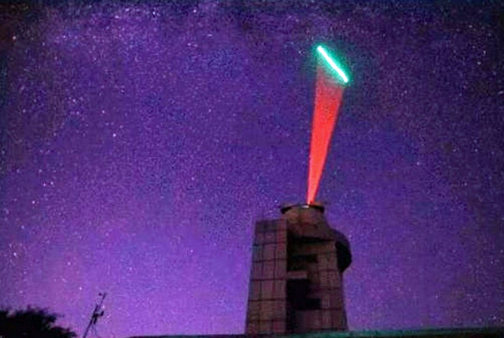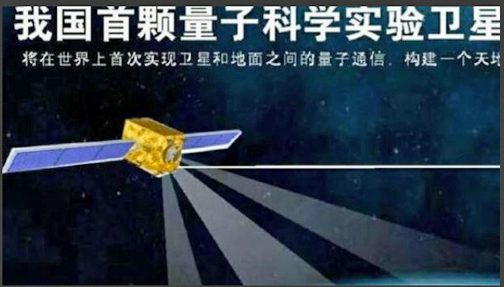
The ground station at Beijing’s Xinglong Observatory communicates via laser with the satellite. Photo: Han Yueyang.
The riddles of the universe — on their way to being solved... that's how Stephen Chen and the South China Morning Post describe a ‘handshake’ from Micius, the nation's quantum satellite that is preparing to conduct the first quantum physics experiments in space.
The world’s first quantum satellite Micius is doing “very well” in space after launch earlier this month, with all on-board scientific instruments meeting or exceeding expectations, a senior scientist involved in the project said.
Major preparations for the satellite were completed a couple of days ago to pave the way for the ground-breaking experiments in communications and physics, Professor Wang Jianyu told the South China Morning Post. In fact, last week, some astronomy enthusiasts observed unusual light beams at a ground station in Xinglong Observatory, Beijing. One of the photos was posted by high energy physicist Dr. Cao Jun on his social media account last Sunday.

Artistic rendition of China's Micius satellite.
The Micius was sending a green laser beam to the ground while the ground station was shooting a red laser to the satellite, according to Cao. The photo exposure took 200 seconds, creating a red “fan” and a bright green line cutting across the starry night scape, he wrote on Weibo, a Chinese microblogging infosite.
Wang, who led the development of the scientific instruments on Micius, confirmed that the photo had captured one of the “warming up exercises." The green beam was laser light at the 532 nanometre bandwidth and the red beam was 671 nm. Both were signal beams used by scientists to establish a physical link between the satellite and a ground station before the start of quantum communication—“just like a handshake before the talk,” Wang said, then added, “I am surprised by the photo. It is unofficial, but stunningly beautiful. The quantum experiments cannot be detected by the naked eye, but with this firm and reliable handshake, I’m confident that the following experiments will proceed very well. All parameters are up to the required standards, and some even higher than the best we had hoped for."
Over the last fortnight scientists and engineers have been testing and calibrating sophisticated hardware in space and on the ground to evaluate whether the satellite worked as designed.
The Micius was launched from Jiuquan Satellite Launch Centre in Inner Mongolia on August 16th. The satellite's mission includes establishing a quantum key distribution network and performing quantum entanglement experiments in space for the first time. The mission has a number of aims built around the developing field of quantum physics. One is to build a global quantum Internet with unbreakable security, while a broader goal is to explore unknown dimensions of the universe that left Einstein scratching his head, such as whether the change of quantum state in one entangled particle can be reflected on the other instantly, regardless the distance between the two.
Before the launch, there was concern whether the Chinese satellite would work, as all previous quantum experiments had been carried out on Earth between fixed stations. The Micius was orbiting at high speed and the receiving telescope on the ground are less than a meter wide. To exchange single photos that carried quantum information between the satellite and the ground stations was “as difficult as throwing a coin into a water bottle on a high speed train from more than 50 km away”, according to a researcher with the Chinese Academy of Sciences involved in the project.
Still uncertain is when Micius' formal experiments will start—some physicists working in top research institutes overseas told the Post that they were closely following the Chinese experiments because they could open a portal to the future of science and technology.

